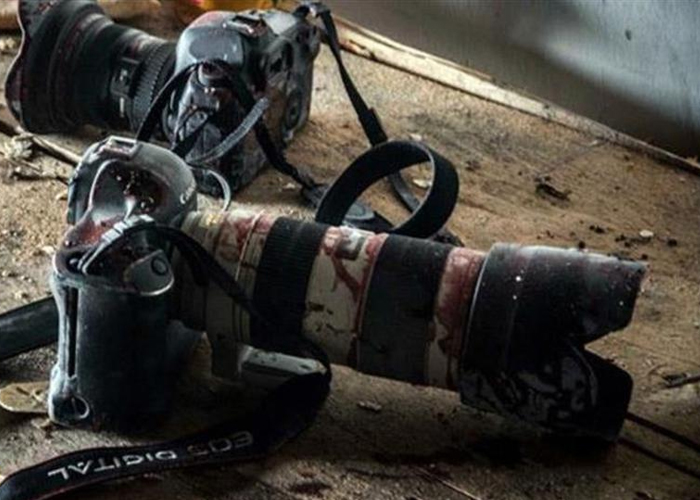In properly functioning democracies, media has a pivotal role to play; it is even considered as an important pillar of the state. Media in democratic societies is expected to keep an eye on law-making, the judiciary and the executive, while also scrutinizing their policies and activities when necessary so that they have a chance to rethink their policies and attempt to improve themselves if they go against the will of the people. In order to do that, however, it is crucial that the media and the journalists are independent, not dominated by the government, and have secure environment. Because, it is the media and journalists that form the public opinion and provide relevant and timely information to the people. The modernized media and hardworking journalists today are capable of supplying people with the required information in real time by reaching people 24 hours a day .
Having accepted the significant role of media in our daily lives, it is also necessary to comprehend that this role is further elevated in the era of turmoil, conflict, war and instability. It is the reason that various opposing groups tend to use it for a variety of propaganda purposes and thereby convince the public to promote their views. Nevertheless, it is vital for media and journalists to remain unbiased in such times so that they are able to fulfill their responsibilities properly, and disseminate the true picture of the war and the role of the opposing parties .
However, for the journalists to make such a role of media possible, it is essential that they have full guarantee of their security. Unless, ensured of their security, it is very difficult for the journalist to perform their responsibilities to their full potentials. Neither they will be able to depict the true picture of the state of the affairs, nor they will be able to stay unbiased in their reporting, if they remain insecure .
Afghanistan is one of the countries hit hard by insecurity and violence for more than three decades now. The insecure circumstances have influenced the journalists to a great extent. There are many parts of the country where there are constant threats of clashes; therefore, approaching those areas is very risky for the journalists; therefore, they mostly avoid going to those areas. Some that are able to reach there are not always sure of what will happen to them. While, a few others even sacrifice their lives for the sake of their duties. Unfortunately, such threats to the lives of the journalists are not limited to the insecure parts of the country any more .
A Washington Post report revealed on Sunday (Dec 27, 2020) that ‘since January, 11 Afghan journalists and media workers have been killed, making this one of the deadliest years for the country ’s rapidly growing domestic media corps since the end of Taliban rule in 2001 .’ Such a piece of news is highly discouraging for the journalists and their families. Moreover, such reports also raise serious questions about the claims of so-called democratic and secure environment for the people since the ouster of Taliban .
Unfortunately, in recent days, the number of attacks on the journalists in Afghanistan have increased manifold. Only in the last two months, five journalists have been killed in different parts of the country. During the last month (November 2020), Elyas Dayee, a Radio Azadi journalist, and Yama Siavash, a famous TV journalist who worked for Tolo News were targeted in two separate, magnetic IED attacks in Helmand and in Kabul. Later, on December 10, 2020, Malali Maiwand, a TV presenter, was shot dead with her driver in daylight in the busy city of Jalalabad . Whereas, a week earlier, a photo-journalist, Rehmatullah Nikzad, was shot dead near his house in Ghazni City. As per the data provided by Committee to Protect Journalists , ‘more than 30 journalists have been killed directly for their work in Afghanistan over the past 10 years .’ Thus, Afghanistan is one of the most dangerous countries for the journalists .
For the Afghan authorities and international organizations, it is now a challenge to take notice of the current rise in the killings of the journalists. Most importantly, the criminals in this regard must be brought to justice and necessary measures must be taken to ensure that the journalists fulfill their duties without the fear of their lives. As Reporters Without Borders ’ (RSF ’s) head of the Iran-Afghanistan desk said after the killing of Nikzad , “The Afghan authorities must act with urgency and the United Nations must take concrete measures to curb the growing violence against journalists and to protect them. Afghan journalists and media must not be condemned to helplessness by the silence from international bodies .” Afghan authorities in this regard are equally to blame; particularly, the security personnel must be fully pressurized to play their role in securing the lives of the people in general and those of the journalists in particular .
Protecting the lives of the journalists is also imperative for a better role of Afghan media in the ongoing peace process in the country. As RSF said in its latest report on Afghanistan , “The experience of the past 17 years confirms that peace and security are what the Afghan people want most, but they cannot be achieved and guaranteed without free and independent media and without guarantees for journalists ’ safety .” At the same time, journalists and media can also play a tremendous role in paving the way of the democratization of Afghan society .
Home » Opinion » Journalists Under Threat in Afghanistan
Journalists Under Threat in Afghanistan
| Sajjad Aasim

